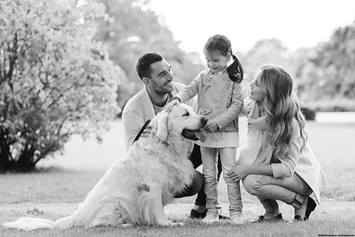Zoonoses
Zoonoses are diseases that animals can give to humans. Examples include rabies and Lyme disease. They spread through bites, scratches, or contact with animals.
What Are Zoonoses?
Zoonoses (zoo NO seez) are infections that people can get from animals. Children with compromised immune systems are at higher risk for these infections. This includes those on chemotherapy or radiation, or who have had bone marrow transplants.
When a person with a compromised immune system handles or cares for a pet the risk of infection is higher. Pets may have no symptoms and seem to be healthy. They can still pass on infections from bites, scratches and direct contact with body fluids, like the animal’s saliva, urine, or feces. The pet’s environment may be contaminated as well. However, there are safe ways to handle and enjoy pets. One of the best ways to be safe is to practice good hand washing. Another is to avoid any new pets while on treatment.
Zoonoses can be prevented when simple precautions are followed. The information in this Helping Hand will help with safe animal and pet care.
Risk Factors
- Handling a pet or animal when you have a lowered immune system. Children younger than 5 years of age have a higher risk of getting zoonotic infections. They often put their hands and other items in their mouths and do not always wash their hands well or often.
- Where you live (city or country or farms).
- Exposure to animals at petting zoos or public sand boxes.
- Exposure to wild animals or game.
- Improper care of pets or their environment. Do not handle a litter box, a pet that has an infection, or bedding that is soiled with urine, vomit, or feces.
- Contact with young animals (puppies, kittens) means a higher risk of infection.
- Any contact with a non-traditional pet. Traditional pets include dogs and cats; all other animals are called non-traditional. They are a higher risk for infection. These include wild animals, exotic animals such as monkeys, ferrets, rats or mice, reptiles (snakes, lizards, turtles), and birds (including chicks and ducklings).
- Any contact with farm animals and their environment (such as hay and barns).
What Are the Signs and Symptoms of Zoonoses?
- GI symptoms
- Diarrhea (can be severe)
- Abdominal cramps
- Poor appetite
- Nausea
- Vomiting
- Pain
- Flu-like symptoms
- Fever
- Body aches
- Headache
- Fatigue
- Swollen lymph nodes
- Skin lesions, scratches or bite marks
How Is Zoonoses Diagnosed?
There are specific tests to diagnose the various diseases and infections that can come from zoonoses. Test results usually come back in 2 to 14 days. Your child’s practitioner can tell you how long each test will take.
How Is Zoonoses Treated?
The treatment for zoonoses depends on the type of infection.
Activity and Diet
If your child has an infection from a zoonoses, the child’s doctor or nurse will give you any special instructions on diet or activity.
Home Care and Prevention
Pets can have a positive impact on a child. They can help with both emotional and physical healing. Here are some pointers for keeping your child safe with pets:
- Do not get any new pets while your child is on chemotherapy, radiation, or having a bone marrow transplant.
- Pets should have regular veterinary care and be up-to-date on vaccines. Pets should be groomed in order to keep their skin, coat and teeth healthy. Nails should be clipped to minimize the risk of scratching. Pets that are ill should be seen by their veterinarian and should not be around your child until they are healthy.
- Pets should be kept out of kitchens and other areas where food is prepared and eaten. Pets should not be fed raw foods (such as raw meat or eggs). They should not hunt or feed in the wild, or be allowed to drink from toilets or standing water. Pets should have clean bedding. If there is currently a pet in the home, children should not help to clean or dispose of any feces, urine, or vomit from the pet. Immunocompromised children should wash their hands thoroughly after contact with the pet.
- If your child is bitten or scratched by any animal (pet or stray), clean the area with soap and water right away. Tell your child’s oncology care provider. Do not allow your pet to lick any open cuts or wounds on the child.
What To Do or Watch for at Home
- Teach your child proper hand washing, especially after handling or coming in contact with animals. Adults should help children wash their hands after they handle pets.
- Do not touch anything soiled with urine, feces, or vomit from animals.
- Keep your pet healthy.
- Keep away from stray animals, including reptiles (snakes, lizards, turtles and geckos), wild birds and primates (monkeys).
- Keep away from animals outside of the home (other households with pets, petting zoos or fairs, animals at school) and follow similar precautions.
Helping Hands Patient Education Materials
Written and illustrated by medical, nursing and allied health professionals at Nationwide Children's Hospital, Helping Hand instructions are intended as a supplement to verbal instructions provided by a medical professional. The information is periodically reviewed and revised to reflect our current practice. However, Nationwide Children's Hospital is not responsible for any consequences resulting from the use or misuse of the information in the Helping Hands.
HH-I-372 12/14 Copyright 2014, Nationwide Children’s Hospital

